Swan Lake by the Nashville Ballet
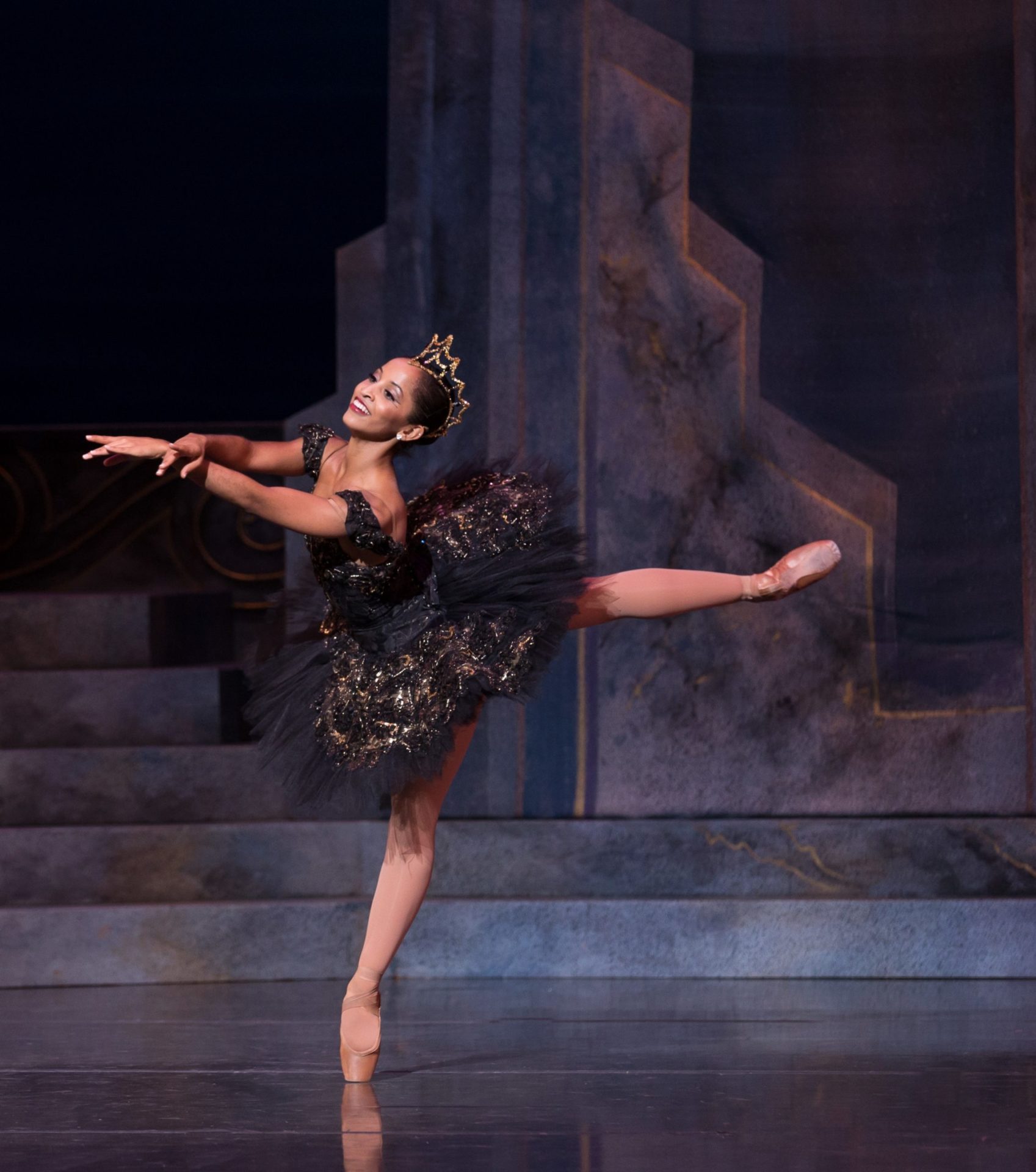
Nashville is celebrating a couple of anniversaries this year. Over at the Symphony they are celebrating Maestro Giancarlo Guerrero’s 10th year and at the Nashville Ballet they’ve begun Paul Vasterling’s 20th anniversary as director with a performance of Swan Lake under the classic Russian choreography of Marius Petipa and Lev Ivanov with the Nashville Symphony playing Peter Ilyich Tchaikovsky’s incredibly romantic score. The performance, staged in a very traditional manner allowed for the original beauty of the work and the talent of the Nashville dancers to emerge.
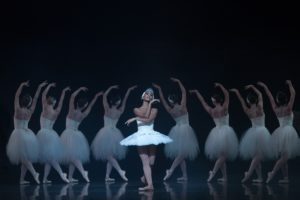
Kayla Rowser dancing in the famous role of Odette/Odile, has a grace and beauty in boundless quantity. From the opening duet in which the wicked sorcerer Baron von Rothbart, dastardly danced by Jon Upleger, provided the exciting contrast that would drive the evening’s entertainment, she ruled the night. Indeed, much of the evening was quite magical, including the great Valse des cygnes from Act Two, and even more remarkable, the great Quartet Danse des petits cygnes given in lavish synchronicity by Jamie Kopit, Julia Mitchell, Sarah Pierce, and Lily Saito.
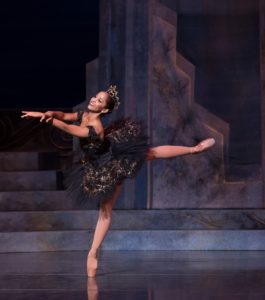
For his part, Nicolas Scheuer as Prince Siegfried, proved himself a dashing and debonair hero. In the third act, his seduction by the evil Odile (Rowser), was remarkable. And while for me, the lieto fine always seemed contrived, I was swept up in the grandeur of the final scene, and romantic moment of Odette and Siegfried standing together to face another day. In addition, the symphony performed Tchaikovsky’s score with such skill that I was lost in the action on the stage for much of it. One of Nashville’s greatest strengths lie in the longstanding collaboration amongst its artists. Hopefully, the collaboration will continue through to Director Vasterling’s 30th anniversary. On October 18 the Nashville Ballet will present Seven Deadly Sins (with music by Ten out of Tenn) and Superstitions (with music composed by Nashville based composer Cristina Spinei).
Ax and Corigliano in Music City
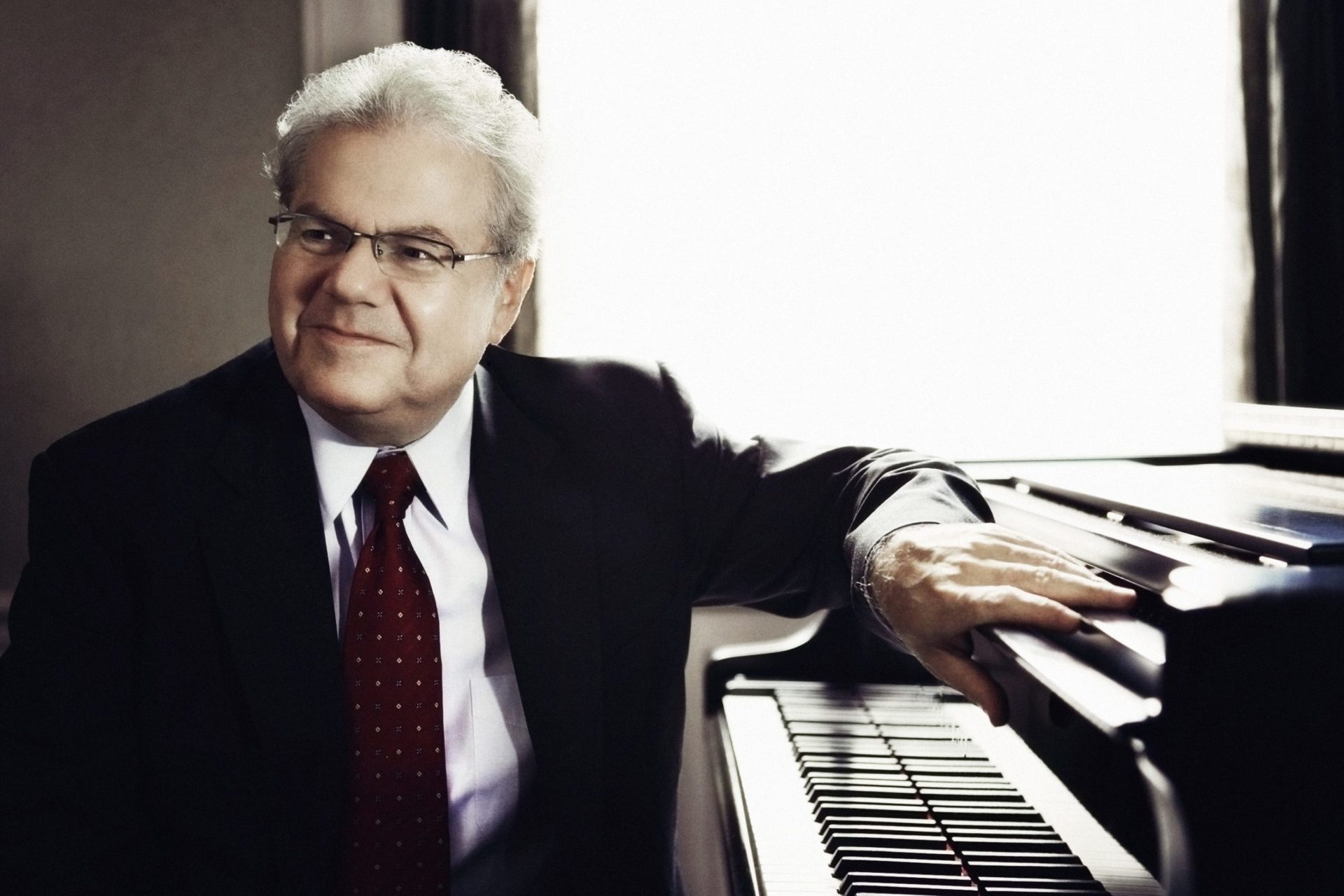
On September 14, 2018 the Nashville Symphony presented a concert that played directly to its primary strengths, both in its ability to reinvigorate existing masterpieces (especially those of the 19th century) as well as it’s place as the premiere interpreter of contemporary American compositions. The only problem, if it can actually be considered a problem, is that both pieces were so moving that the evening was almost overwhelming.
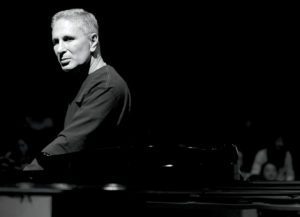
The concert opened with John Corigliano’s First Symphony (1990). Written to commemorate the devastation of AIDS during the ‘80s, as the composer described during a preconcert lecture that was both informative and moving: it was written for “…my friends – those I had lost and one I was losing.” Indeed, the piece is a virtuosic composition that folds a programmatic narrative with aleatory elements into a traditional four movement form. Those four movement simultaneously fit into a first movement sonata allegro form complete with a recapitulative reprise—an accomplishment that was only really convincingly achieved by Beethoven in his 9th Symphony and Schubert in his Wanderer Fantasy.
So much of the performance was riveting, including the ferocious opening gesture, the animated Tarantella depicting a decline of sanity, and the quoted piano transcription of Isaac Albéniz’s Tango. However, for me, the most powerful moment was the slow third movement’s Chaconne, whose theme was adopted from a transcript of a tape that Corigliano made of his improvisations with a cellist friend who had died. Soon, a second cello line enters depicting the fact that not only had his cellist friend been taken by this plague, but his teacher too. The parts, played with great lyricism by Nashville Cellists Kevin Bate and Xiao-Fan Zhang, were wonderful. And the reprise, including the great musical waves of the final movement, were perfectly balanced and measured, bringing the amazing musical relationship the orchestra has with Guerrero to the fore. It was a wonderful first half and intermission felt otherworldly.
When Brahm’s finished his Second Concerto for Piano (Op. 83) he told a friend that he had written a “…tiny, tiny piano concerto with a tiny, tiny wisp of a scherzo,” when nothing could have been further from the truth. Indeed, the work is on an epic scale taking an estimated 50 minutes to perform (Beethoven’s Emperor averages at 40). It is given in four movements like that of a symphony and the thematic rhetoric of the work is much more symphonic in conception. It lacks many of the structural articulations that one expects of a concerto form, and those that it does have seem misplaced.
For example, the only real cadenza in the work happens in the first few bars, following an opening solo statement of the primary theme from the horn. From this moment on the piano is so tightly woven into the cloth of the symphonic texture that the part seems to compete with itself as a solo part, as an obbligato or even as just another member of the orchestra. In performance it not only demands an incredible level of technical stamina and fluent artistry, but also an intellectual rigor in order to facilitate an estimable interpretation. On Friday, Emanuel Ax was up to the task. His eloquence was remarkable from that opening cadenza to the final bars.
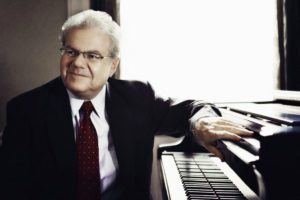
This is one of the most difficult pieces in the piano’s repertoire and Ax seemed to enjoy it. His interpretation of the rushing scherzo seemed for moments to not just accompany, but carry the orchestra through Brahms’ compositionally virtuosic whirlwind. Maestro Guerrero, who has worked with Ax in Nashville before, was very nuanced in his steerage of the orchestra, maintaining a synergy throughout. In my opinion, the highlight of the second half was the finale with its incredible onslaught of new themes, one after the other, which Ax performed with an amazing balance of interpretive clarity and anxious enthusiasm.
As I stepped past the new bust of the Maestro in the foyer and exited the Schermerhorn I remember thinking of the embarrassment of riches I had just enjoyed and how lucky I am to live in Music City. The Nashville Symphony returns on October 4-7 with John Adams Harmonielehre and Ludwig van Beethoven’s Violin Concerto performed by James Ehnes.
The Nashville Symphony Celebrates Bernstein
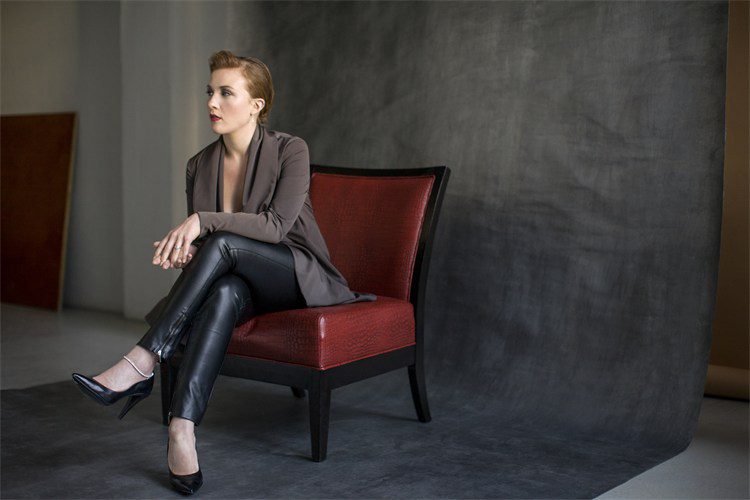
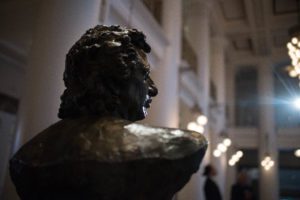
Last Saturday, September 8th, at the opening of the 2018-19 season and the tenth year of Maestro Giancarlo Guerrero’s tenure, the Nashville Symphony revealed a bronze sculpture of its prized conductor. The sculpture, commissioned from artist Alici
Ponzio of the Hayne’s Gallery, resides now in the foyer of Schermerhorn and serves as a a wonderful welcome to people as they arrive into the hall. At the reception and reveal it was delightful to see the Maestro positively, and humbly, beam at all of the attention, but then look quizzically at the bust. Considering that Guerrero is a Grammy award winning conductor and champion of American classical music, the fact that the following performance was an evening dedicated to the 100th anniversary of Leonard Bernstein’s life seemed perfectly appropriate.
The evening opened with Bernstein’s Three Dance Episodes from On the Town. Arranged from the composer’s first show of the same name, the work is an excellent example of Bernstein’s adaptation of the blues for the symphonic stage. The range of events, from the excitement of a celebration in Times Square to a contrasting darker central section which the composer himself described as: “…both tender and sinister, in which a sensitive high-school girl in Central Park is lured and then cast off by a worldly sailor” make for a very exciting piece, and the Symphony stepped up to the challenge with a performance that was equal parts exciting and moving. Special mention goes to the saxophone solos performed by Don Aliquo. Similarly, the Symphonic Suite from On the Waterfront frames a central intimate section depicting a pair of lovers with an aggressive depiction of urban reality. As Maestro Guererro stated in at the beginning, these are all pieces everyone knows, and the smiles from the audience at intermission said as much.

Indeed, after intermission, the Symphony No. 1, “Jeremiah” was the one work I was not acquainted with before the concert. Begun after his graduation from Harvard in 1939 as a single movement work as a setting of Hebrew excerpts from The Book of Lamentations, in 1942 Bernstein decided to expend it into a larger symphonic work with two preceding movements. Jeremiah, a Hebrew Prophet who foresaw the destruction of the Temple, his lamentations depict the isolation of the Hebrew nation after this catastrophe. Indeed, Bernstein described it as: the third movement “…is the cry of Jeremiah, as he mourns his beloved Jerusalem, ruined, pillaged and dishonored after his desperate efforts to save it.” In this mezzo-soprano Sasha Cooke performed with a tragic clarity and sorrowful warmth that marked this movement and the best of the evening.
Like the two pieces from before intermission, Guerrero arranged the evening with an inner intimate movement (the Symphony) framed by exciting a bawdy outer pieces. This concert closed with a rousing rendition of the Symphonic Dances from West Side Story. All sections performed wonderfully, and the exciting shout of “mambo” brought chills. From the intimacy of “Somewhere” to the excitement of the “Rumble” this work made the expressive strengths of our hometown ensemble clear, all further exemplified by the encore performance of the overture to Candide. In all it was a great season opener from the NSO, and it looks like it is going to be a great year. The season continues next weekend with a performance of the rarely heard first Symphony by John Corigliano and Emanuel Ax’s return to Nashville to perform Brahms 2nd Piano Concerto.
Symphony Under the Stars (with Fireworks)
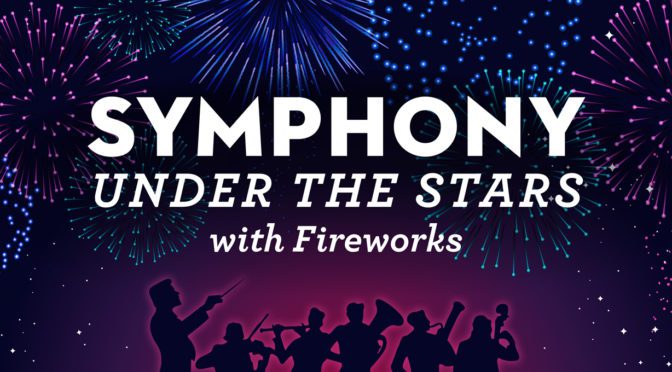
It’s a night of masterpieces under the stars as Maestro Giancarlo Guerrero leads your Nashville Symphony in some of classical’s biggest hits along with a spectacular fireworks display. Award-winning pianist Markus Groh, renowned for his astounding musicianship, will solo on Beethoven’s majestic and beautiful Emperor Concerto. The evening will build to a rousing finish with Respighi’s Pines of Rome, one of orchestral music’s most thrilling showstoppers, erupting in a blaze of brilliant musical colors.
Nashville Symphony Announces 13th Annual Free Day of Music
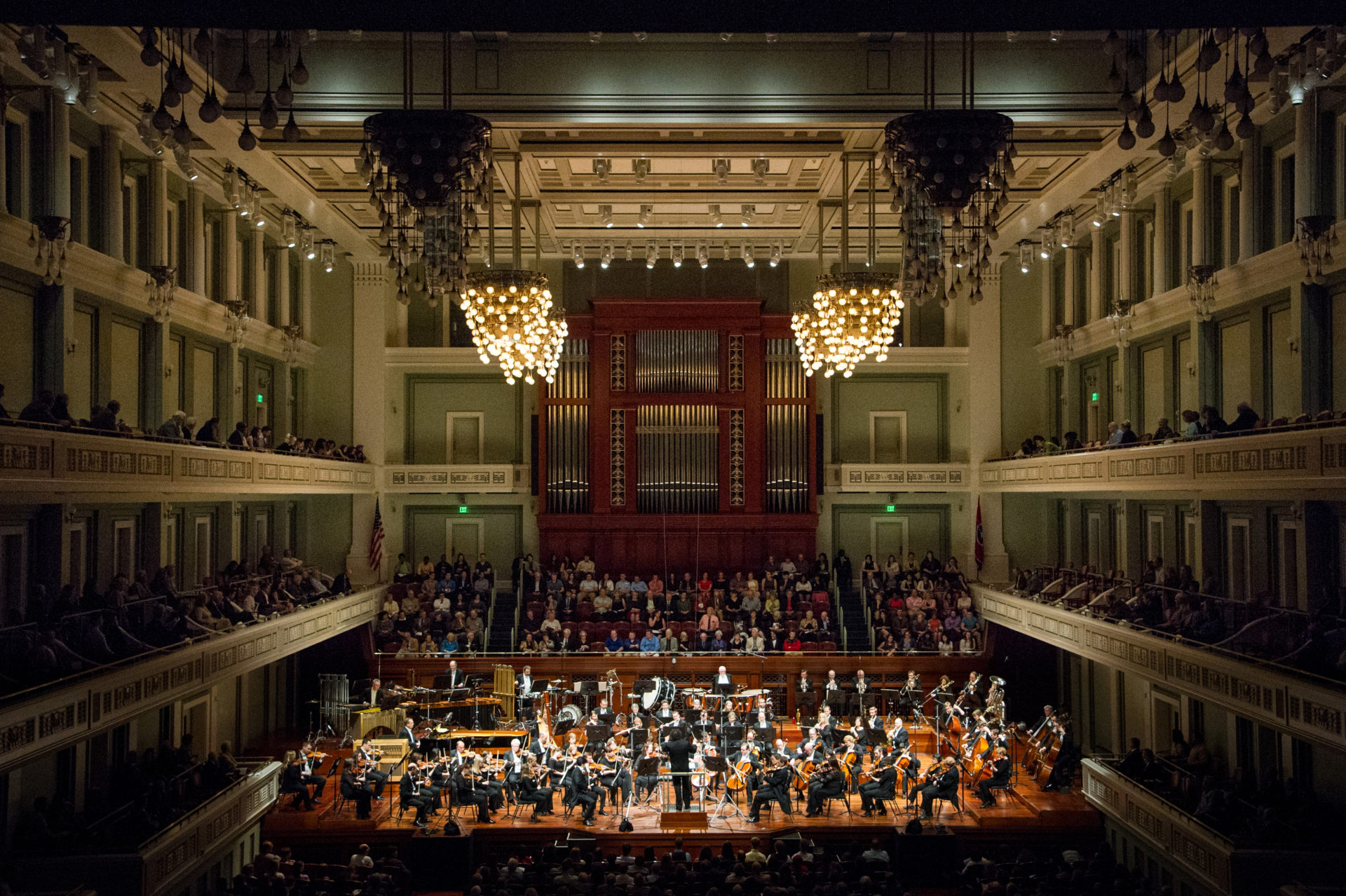
A Music City fall tradition! The entire community is invited for a full day of free performances, featuring everything from classical and jazz to rock and country, starting with a concert by the Nashville Symphony.
Other performers include Nashville in Harmony, Nashville Salsa Machine and innovative classical ensemble Chatterbird, with additional performers to be announced. As in past years, Free Day of Music will also include a Q&A with Nashville Symphony conductors.
In addition to 25 performers on four stages throughout Schermerhorn Symphony Center, Free Day of Music will also feature:
- Enhanced accessibility and sensory-friendly offerings throughout the day, including quiet spaces, ASL translators for select performances, and other supports
- Halloween and Day of the Dead themed family activities, presented in collaboration with Conexión Américas, including face painting, a costume contest and more
- The popular Instrument Petting Zoo, which offers music lovers of all ages a chance to try out a wide variety of musical instruments (open 11:45 a.m.-3 p.m.)
- Sweet and savory treats from some of Nashville’s finest food trucks
- An outdoor beer garden
- A photo booth
- And more
The Nashville Symphony will announce the full lineup for Free Day of Music 2018 early this fall.


